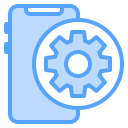The Cross-Platform Landscape at a Glance
Most teams begin with React Native, Flutter, .NET MAUI, Ionic, and Kotlin Multiplatform Mobile. Each offers unique trade-offs across performance, UI fidelity, ecosystem maturity, skill reuse, and long-term stability.
The Cross-Platform Landscape at a Glance
We focus on rendering approach, performance characteristics, UI consistency, developer experience, platform reach, and maintenance realities. Use these pillars to evaluate today’s needs without painting yourself into tomorrow’s corner.
The Cross-Platform Landscape at a Glance
Which framework are you testing or running in production? Drop a quick comment describing your team size, target platforms, and constraints. Your context helps future readers make sharper, safer decisions.





